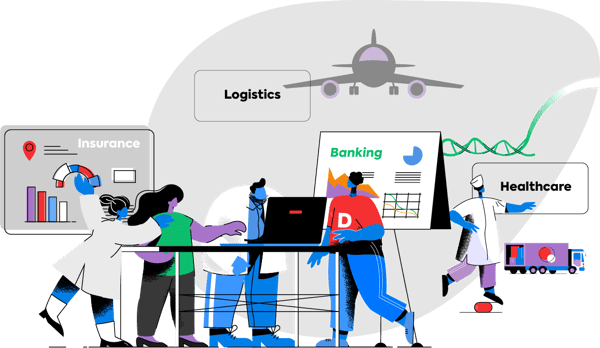6 smart ways in which an enterprise grade RPA product can be extended
by Rajesh Agarwal, on Sep 11, 2019 8:19:00 PM
Estimated reading time: 2 mins
Enterprises are faced with challenges where they have to do more with less. In existing red sea scenarios, where businesses negotiate sustenance based on price margins, exploring blue seas is a matter of survival. Robotic Process Automation (RPA) is one such technology that not only helps achieve maximum mileage with existing Information Technology investments but also creates new business avenues.

As we already know, RPA helps achieve end-to-end task automation by being a major component of a BPM technology stack. It also helps achieve maximum mileage through hybrid cloud deployment and integration with Artificial Intelligence (AI) technologies including Machine Learning (ML), Natural Language Processing (NLP), text analytics, etc. With this kind of extensibility, the RPA market for the software and services combine is expected to reach USD 1.2 billion by 2021 (HfS, Everest Group).
Extending an enterprise grade RPA product
Here are 6 smart ways in which the use of an enterprise grade RPA product can be seamlessly extended:
6 ways to extend RPA product -
- Natural Language Processing
- Machine Learning
- Optical Character Recognition
- Speech Recognition
- Recommendation engines
- Predictive Analytics
- Natural Language Processing: Helps to pick nuances of typed in queries, including sentiments, and accordingly execute commands
- Machine Learning: Helps to process unstructured, free text data, such as emails, social media, invoices, images, etc.
- Optical Character Recognition (OCR): Also known as Document Processing or Electronic Data Capture, offers to extract information from printed paper material and hard copies and transfer it across multiple touch points.
Read how Intelligent Data Capture complements RPA to achieve total automation >>
Read about the Top 38 pre-processing must haves for Intelligent Data Capture >>
- Speech Recognition: Assists in leveraging voice commands in place of plain querying, for example chat bots
- Recommendation engines: Provides suggestions and personalized promotions during searches on digital marketplace sites, online portals, document management systems, etc.
- Predictive Analytics: Extracts information from available data and shows patterns to predict outcomes and trends
Artificial Intelligence and allied technologies transform the Robotic Process Automation landscape to make it more productive.
Read more >>
The combined use of these cognitive technologies helps RPA leverage complex scenarios that involve unstructured data and require human judgement. It also helps to interpret hidden information and reveal patterns for making decisions and predictions. These outcomes can be put to smart use in avenues, such as:
- Fraud detection
- Document classification and summarization
- Market trends and predictions
- Customer sentiment analysis
- Premium calculations and policy renewals
- Document validations
- Customer segmentation
RPA use cases
We always have some low hanging fruit that are good candidates for RPA automation. Here are some RPA use cases from different industries, which offer some guidelines on how RPA helps achieve operational excellence and how its use can be extended.
Read now >>
In summary
In changing business scenarios having complex business requirements, pure play RPA has only a finite scope. By intelligently leveraging RPA along with cognitive technologies, enterprises can not only achieve more with less but also explore fresh business avenues and revenue streams.



















